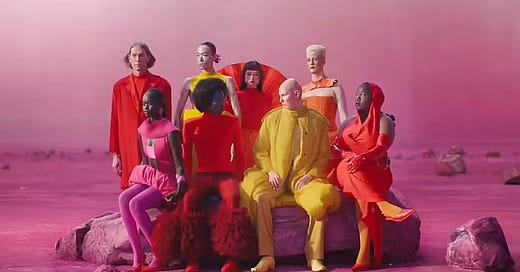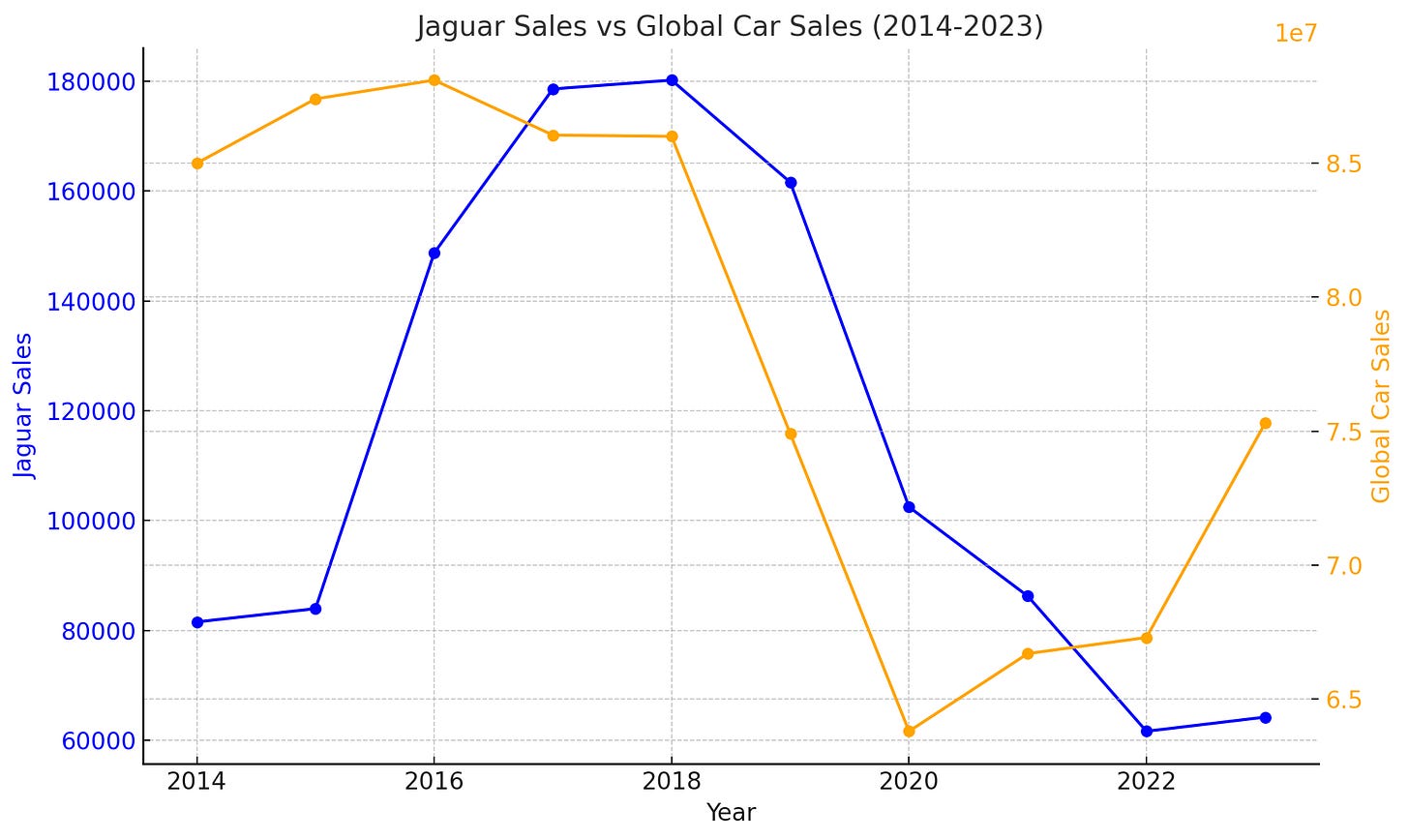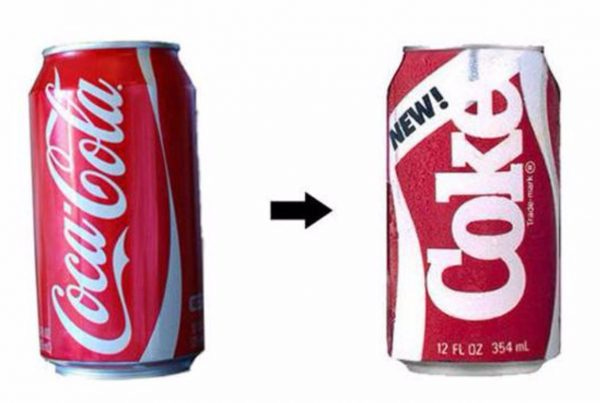The Jaguar Evolution: A Bold Rebrand in the Face of Declining Sales
Jaguar has long been a name that evokes luxury, precision, and timeless elegance. But in recent years, that roar has softened.
If you’re new here: I’m Demetris Stefani, Founder of Hivebreed. I write a newsletter about what makes modern life beautiful, business, marketing, and inspiring stories. If someone forwarded this to you, subscribe along with 2K others.
Sales are down, competition is up, and the brand seems caught in a tug-of-war between heritage and the demands of a fast-changing industry. In 2024, Jaguar decided to take the wheel and steer hard—unveiling a rebrand that aims to carve out a new, bolder identity in the all-electric future.
But is this the right move? Or does it risk leaving behind the very things that made Jaguar iconic?
The Need for Change
The data doesn’t lie. Jaguar’s journey over the past decade has been turbulent, to say the least. Sales peaked in 2018 at over 180,000 units, driven by the wildly successful F-PACE and E-PACE SUVs. But by 2022, the wheels started coming off. Sales plummeted to a dismal 61,000 units—a staggering 66% drop from their peak.
A glance at the trends (see graph below) paints a clear picture: Jaguar’s decline isn’t just about poor product strategy; it’s about the industry moving forward while the brand stayed in neutral. Supply chain disruptions, pandemic fallout, and an ill-prepared transition to electric vehicles compounded the problem.
Jaguar vs. Global Car Sales
The High of 2018
The climb to Jaguar’s 2018 peak was built on solid foundations:
SUV Boom: The F-PACE and E-PACE tapped into the growing global demand for SUVs, bringing new life to the brand.
Market Momentum: Strong performance in key markets like China and North America drove volumes.
The Crash by 2022
By contrast, the freefall in sales was driven by:
Global Semiconductor Shortages: Slowing production and delivery across the industry, but especially impactful for smaller players like Jaguar.
Pandemic Aftershocks: Supply chain chaos and ongoing lockdowns in key markets like China.
Lack of EV Strategy: While competitors doubled down on electric vehicles, Jaguar lagged, leaving them exposed in a market shifting faster than they could pivot.
The Rebrand: Shift or Drift?
Fast forward to 2024, and Jaguar’s response is clear: it’s time to turn the page. The brand has embraced “Exuberant Modernism,” a design philosophy aimed at positioning Jaguar as a bold, creative force in the luxury electric vehicle space. With slogans like “Copy Nothing” and a commitment to an all-electric lineup by 2025, Jaguar wants to be seen as forward-thinking and fearless.
And to their credit, the approach makes sense:
The future is electric, and Jaguar needed to make this shift to stay relevant.
The brand’s target audience is younger, urban, and values creativity—exactly the audience drawn to the new positioning.
What the Data Tells Us
Looking at the numbers, it’s hard to argue against the need for change. Jaguar’s heritage, while iconic, has become more of a nostalgic weight than a driver of growth. But here’s where the story takes a turn: Jaguar risks throwing out its own rulebook in trying to reinvent itself.
A Personal Take: Where's the Bridge?
Here’s the issue: a great rebrand isn’t just about where you’re going—it’s about where you’ve been. Jaguar’s new direction feels like it’s trying to sprint into the future without honoring its past. There’s a fine line between reinvention and disconnection, and Jaguar’s execution teeters dangerously close to the latter.
The heritage of the Jaguar name, its unmistakable association with elegance and performance, seems absent from this new identity. Instead, we’re left with a modern, abstract take that feels more like a fashion brand than a legacy automaker. It’s bold, yes. But does it bridge the gap between the Jaguar of yesterday and the one they hope to become? Not quite.
Success or Misstep?
The big question: will Jaguar’s rebrand be remembered as a daring success or an overreach? Will this be a reinvention that breathes new life into the brand—or will it be their “Diet Coke moment,” where alienation outweighs innovation?
The data speaks for itself. The ambition is there. But success? That will come down to whether Jaguar can build a bridge between its storied past and the electric future it’s racing toward.
If you enjoyed this edition, feel free to share or forward the email to someone who might appreciate it. You can also show your support by clicking the ❤️ below, which helps increase my visibility on Substack.
See you next time,
Demetris






